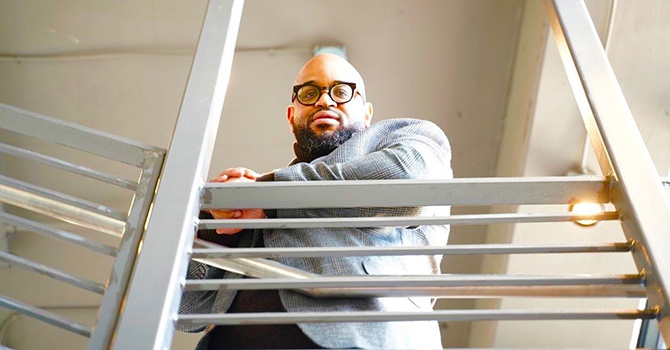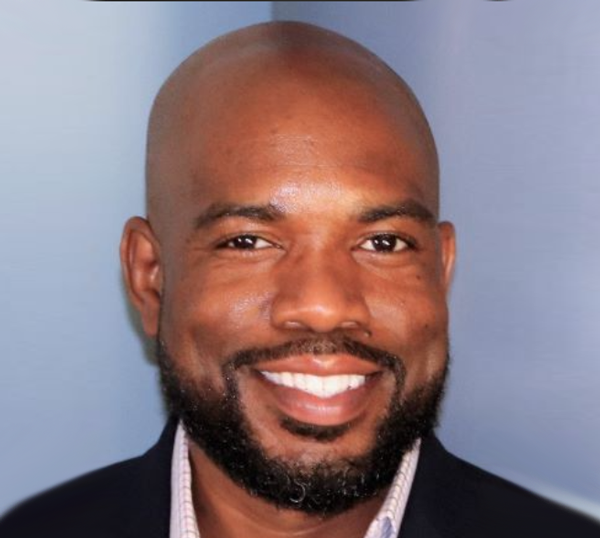Leadership literature often talks about “experimentation” and settings that are “laboratories” for learning. But those terms are used as metaphors, and probably few church leaders have done a rigorous scientific experiment since college.
What do those terms mean to someone actively engaged in the production of scientific knowledge? How are scientists’ jobs different from others’ -- and what might be learned from those whose work does involve actual experimentation in a laboratory?
Faith & Leadership spoke to Duke University biologist Mohamed Noor about his work as a scientist and the lessons that other leaders -- in the world of the church and elsewhere -- might learn from the way a laboratory works. He also shares his tips on how to manage a team.
Q: Explain what your work is and what your lab is about.
It’s actually a very broad thing. We’re very fortunate to be in academia in that what we want to do is largely left to us. My job, as a professor of biology, is to do research in biology and teach biology, but the research part is completely wide-open.
I study the process of evolution, or change through time. But what exactly I choose to do there is completely up to me in the sense that I can start going in a particular direction. If it seems fruitful, I can keep going in that direction.
If I decide I’m tired of that particular question, I can go in a different direction.
Q: You use the word “fruitful,” which Christians use in a particular way. What do you mean by it?
When I think of a particular scientific pursuit as “fruitful,” I mean that there are questions to which we don’t know the answers, but that my research team and I can do experiments to try to answer those questions or to try to begin the process of answering those questions.
I’ll use a specific case of what I’m doing right now. One of the things I’m trying to understand is, what are the genetic changes that make a new species?
For example, if you look at a horse, it’s a horse. It’s a species. A donkey is a different species. We know they are different species, because if you breed a horse with a donkey, you get a mule, and it’s sterile. You can’t have a population of all mules that then are self-perpetuating. It stops there.
Horses and donkeys look similar. Genetically, they’re very similar, too, so what is it about this group that makes it so they cannot breed with that group? There has to be some sort of genetic difference between them, because horses only beget other horses, and donkeys only beget other donkeys.
We don’t study this with horses and donkeys, because they’re very impractical to work with, but we do this using fruit fly species.
We have a hypothesis, for example, in which we say, “Well, it’s possible that this particular gene may be involved.”
The hypothesis is that maybe it’s this particular gene. The test we do then is moving this gene from this species to that species, and then we look at it, and the answer will be either yes or no. Either yes, it recovers fertility, so yes, that is involved; or no, there’s no effect whatsoever, so no, that’s not involved.
Q: What is the big question you’re trying to answer?
What are the genetic changes in general that need to happen to make one species split into two separate species? And we’re trying to answer more broadly, where does biodiversity on the planet come from?
Q: Why do these questions matter?
There are applied aspects, and there are basic aspects, and this is true for a lot of science. In a basic sense, we just want to know because we want to understand the world around us.
In an applied sense, we, as humans, are destroying a lot of the life right now on the planet. We’re reducing biodiversity quite a bit. It helps us to understand what the features are that cause biodiversity to come about so maybe we can be more proactive about not destroying it.
Q: You mentioned the freedom in your work. But it’s not total freedom, right?
On the one hand, I say I have full academic freedom, but on the other hand, if I pick something that nobody else is interested in but myself, it will never get money. Maybe I can sit there in my office here and try to work on it, but I’ll never get money to actually hire people or get the research supplies I’ll need to do them.
The process starts with, basically, an idea. I say, “Hmm, how can I tackle this? I’ve been reading all these papers on this topic and here’s this other explanation I think hasn’t been sufficiently considered so let me design some experiments.”
Q: So you might have a creative light bulb or an individual idea, but it sounds like from the outset there is a collaborative process and you’re part of a broader community.
Exactly, very much so. We’re always building on what other people have done in the past. Extremely rarely are we shooting off in a completely new direction. We’re typically extending a previous observation in new and hopefully fruitful directions.
It can’t be marginal. If you’re being part of the community, if you’re doing these really marginal advances and just slightly tightening the screws a little bit, then usually people don’t see that as a high priority. Usually what people want is something that really dramatically advances our insight or changes our insight.
Q: Talk about what the lab is. It’s a place, of course, but isn’t it also an organization?
It really is the people much more than the place. A lab -- usually when people refer to that, it’s usually their research team. Sometimes it’s also the location where they’re working.
In my case, our lab right now is a little bit heavier on the graduate students than on the postdocs. We have four graduate students, two postdocs and two technicians. That’s eight senior people. We also have some undergraduates.
We do have a physical room where there’s office space for the staff members. There’s open research space where they’re sitting there and mixing chemicals.
There’s also an animal handling space where they’re manipulating the fruit flies themselves.
Q: How does the hierarchy work day to day? Are you the boss of these people doing these experiments?
Yes and no. If you ask 30 biologists, you’d probably get 30 different answers to this question, but I’ll tell you my personal answer.
I would say that I am the boss of the technicians. I don’t see myself as the boss of the graduate students. The graduate students -- I am their adviser, so my job is to give them advice. They can choose to follow that advice, but they don’t have to follow that advice.
It’s almost like a subcontractor relationship. For example, I don’t tell them to come tell me when they come in in the morning and when they leave in the afternoon. The only [way I oversee] them is in the sense that, are they making satisfactory progress overall in whatever their endeavors are?
Q: So if people are somewhat autonomous, why are they in your lab? Is it because they are all working on the same problem?
That’s exactly it. Usually they come to my lab in particular because they’re interested in the same kind of research that I’m interested in. If they were not interested in the research, then there’s no particular reason for them to be in my lab.
What I tell my graduate students when they start is that the closer you pick a project to my interest, the more I’ll be able to help you. The further afield you go, the less I’ll be able to help you.
Q: In what ways does this structure -- autonomous people working toward a central question -- advance knowledge and get answers? Why does it work?
They interact with each other in the sense that there are often pieces that this person’s doing or that person’s doing -- there’s data that this person has obtained that is very relevant for what this person is doing as well. They can use some of that data as well, and then often, if that happens, they can publish the results that come from that together.
There’s often that direct interaction. Sometimes it’s a little bit less direct in the sense that it’s a skill set rather than a piece of data that is useful.
For example, there’s one person in my lab who’s extremely good at computer programming. She has very much helped other people in the lab when they’ve hit a particular snag, and other people have helped her with more hands-on molecular biology.
Everybody’s helping everybody else. The way it all comes together in the end is sometimes we’ll write synthetic papers, which actually span what multiple people are doing, and then it really is trying to advance the field forward a big step rather than a little step.
Q: In some ways you’ve described it as being multigenerational. How do people with different levels of experience and knowledge work together?
People always assume that there’s a very big difference there between the different levels, but it is not nearly that big. So you figure a senior undergraduate is a year away from being a graduate student; a senior grad student is a year away from being a postdoc. So the variance within those categories sometimes exceeds the variance between those categories.
But often just the skill set that people bring -- it’s unique. We have, for example, an undergraduate in the lab now who has finished his second year, but he could easily pass for a graduate student. He’s so well-read. He has had multiple projects. He has presented at national conferences. He’s extraordinary.
I don’t see it as being a dramatic distinction between this grad student and this postdoc, just based on their level. We’re all part of the team.
Q: When you’re working with people, are you helping them become part of this larger community?
It’s part of my job to do that.
One of the biggest challenges people face as a starting faculty member is the fact that most of the things they want to see done, they could probably do themselves better -- not everything, but most of the things.
You have your first new Ph.D. students starting. This person has never had an adviser before. They probably know almost none of the techniques you know. You’ll ask them to do something and things will go wrong, or something that you think is obvious was not at all obvious to them.
Being a faculty member or the principal investigator, part of the learning process is learning what are the things that really are not obvious.
It’s a lot of scaling expectations and remembering that our job isn’t just to get the research done. Our job is to mentor these people. That is a very, very significant part of our job.











